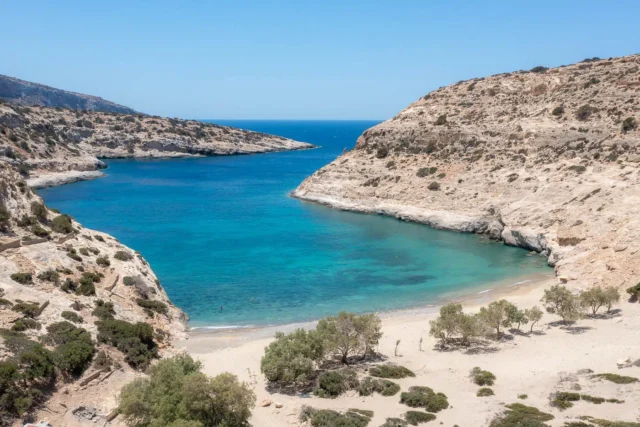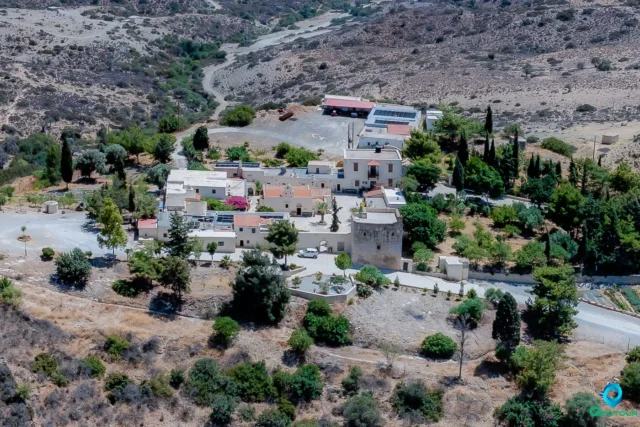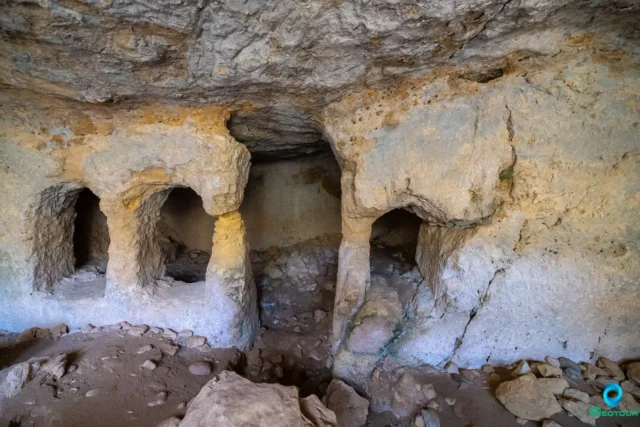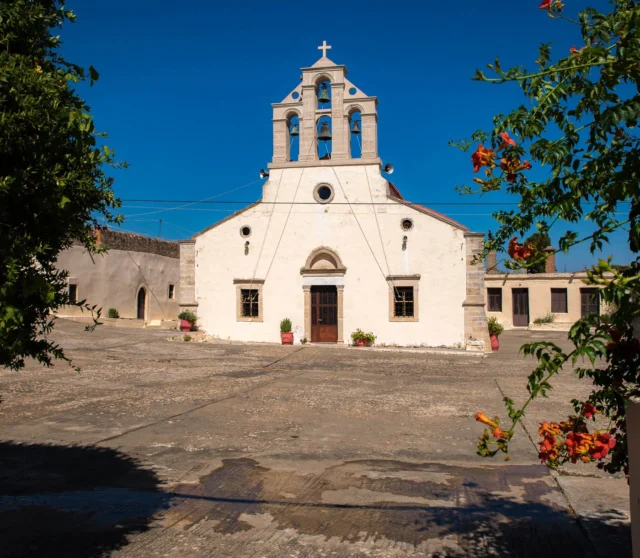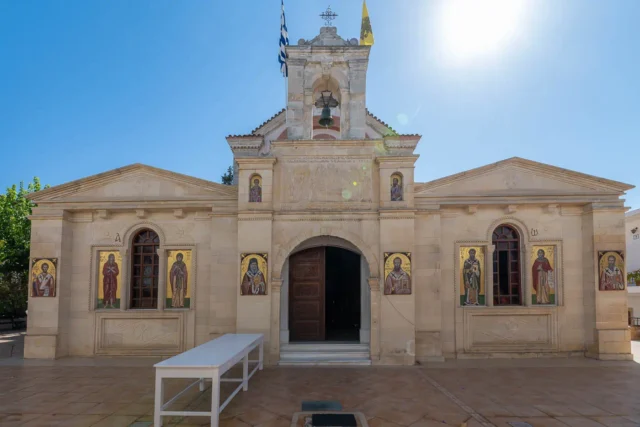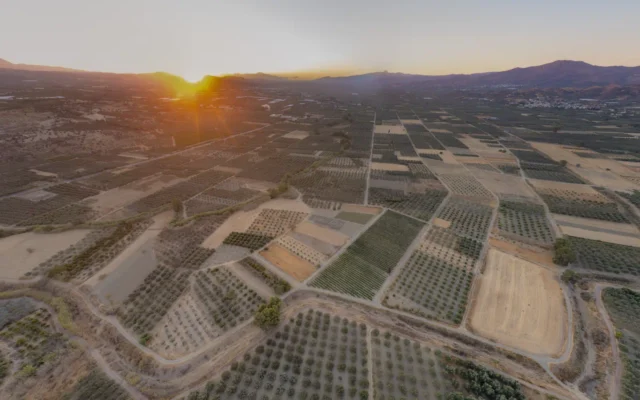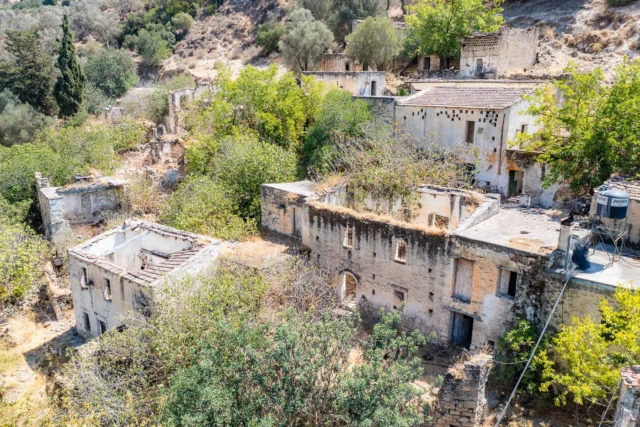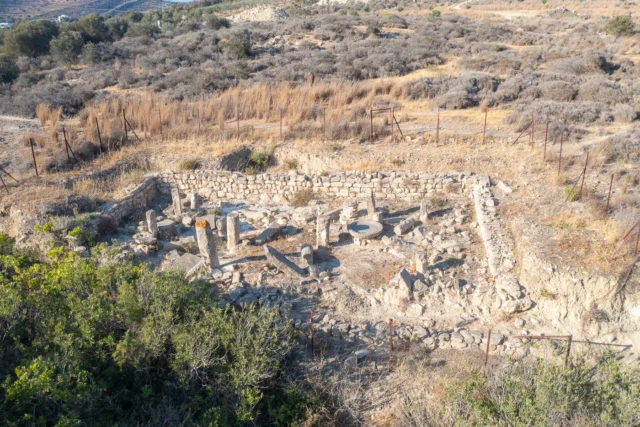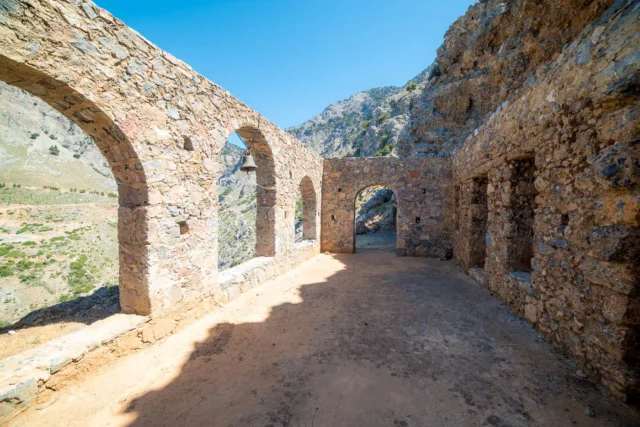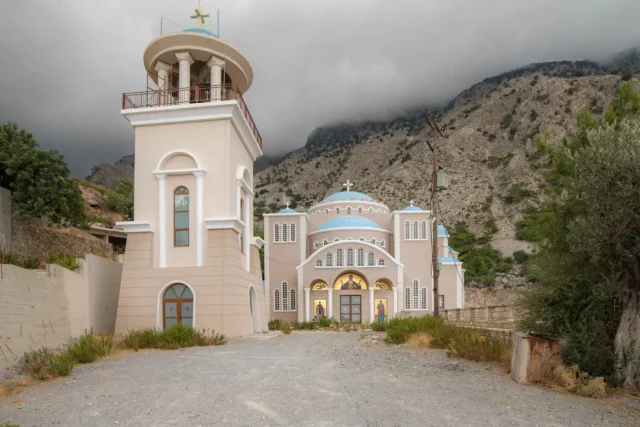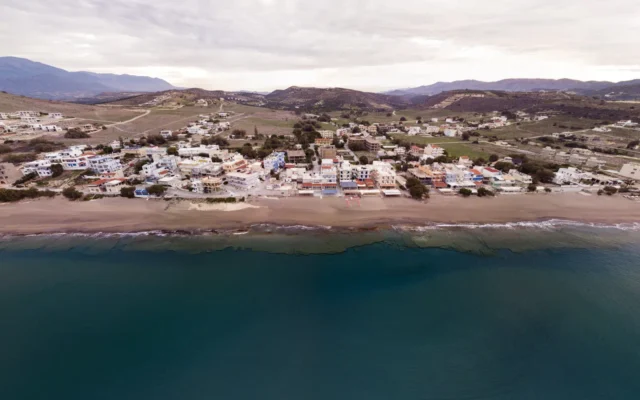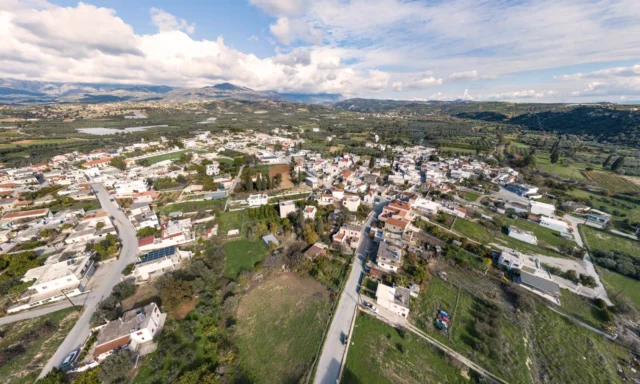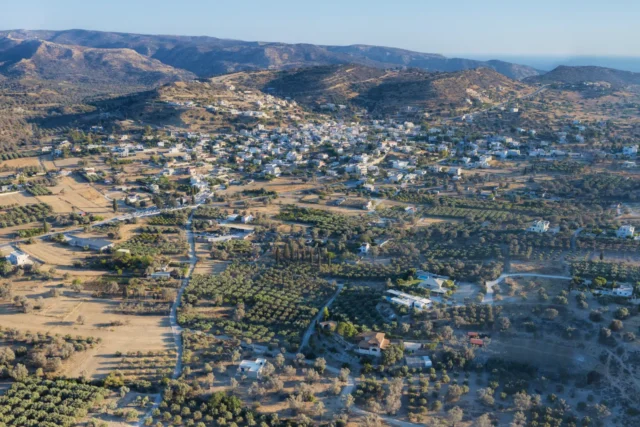86
listings found
Categories
Active filters:
Vathy
Vathy Beach, a secluded haven on Crete's southern coast, is located 79 kilometers southwest of Heraklion and 17 kilometers south of Sivas, near Cape Lithino. The beach, nestled at the end of a gorge carved by the Vathy stream, is surrounded by towering cliffs that create a lagoon-like setting. Historically, it was a pirate hideaway and a hermitage for monks from the Odigitria Monastery. The surrounding cliffs feature natural alcoves and shelters built by locals from Gergeri village who brought their flocks here to overwinter. The beach is generally calm, except during westerly winds, and has a sandy seabed with some rocks. It offers a tranquil escape, with few tamarisk trees for shade and no amenities. To reach Vathy, drive from Sivas to the Odigitria Monastery, turn right onto a dirt road heading west, and continue for about 10 kilometers. Despite its remote location, the beach can get crowded in August.
Moni Odigitrias monastery
Moni Odigitrias, a 14th-century Greek Orthodox monastery nestled in the Asterousia Mountains of Crete, stands as a testament to the island's rich history and resilience. Dedicated to the Virgin Mary "Odigitria" ("She who shows the way"), the monastery has been a place of pilgrimage and refuge for centuries.
During the Venetian period, Moni Odigitrias flourished as a center of learning and art. Its walls are adorned with frescoes by renowned Cretan painters, including Angelos Akotantos, who also crafted the monastery's iconic iconostasis. The monastery's collection of valuable icons and manuscripts further reflects its cultural significance.
Moni Odigitrias played a pivotal role in the Cretan resistance against the Ottoman Empire. It served as a sanctuary for rebels and a symbol of defiance. The legendary "Xopapas" (Father Ioasaph), a monk turned rebel leader, led the resistance from within the monastery's walls.
Today, Moni Odigitrias remains a working monastery, home to a small community of monks. It has undergone extensive restoration and welcomes visitors to explore its historic grounds, including a museum showcasing artifacts from its past. The museum houses a traditional loom, a stone oven, an olive press, and agricultural tools, providing a glimpse into the monastery's self-sufficient lifestyle.
Siderospilia near Roufas
Siderospilia, meaning "Iron Caves," is a complex of three interconnected chambers carved into limestone bedrock near Roufas, Crete. Its purpose is debated, with theories ranging from blacksmith workshop to Roman-era burial site. Chamber 1 features a broken supporting column, roof opening, and stone bench. Chamber 2 is larger, with niches for burials. Chamber 3 resembles an early Christian church, with a dividing wall and door. Local legends link the cave to blacksmiths, ghosts, and eerie sounds. Some believe it was a dwelling before becoming a necropolis. The cave's location near a stream and possible ancient structures adds to its significance. Siderospilia is accessible but lacks official signage.
Panagia Kardiotissa near Voroi
Former monastery north of Voroi, Crete. Features a double-aisled church with late 14th-century frescoes. Generally closed to the public.
Apezana Monastery
Apezana Monastery, located in Crete's Asterousia Mountains, is a 15th-century sanctuary dedicated to Saint Anthony. It features a fortified design, a church with a carved iconostasis, and a rich history intertwined with Cretan resistance and Orthodox faith.
Lasaia: An Ancient Cretan Town and Port
Lasaia, an ancient coastal town in Crete, was a vital port with a rich history spanning from the Minoan to Roman periods. Its well-preserved harbor complex played a crucial role in maritime trade and cultural exchange.
Association for People with Special Needs (AMEA) “To Mellon” (The Future)
Association for People with Special Needs (AMEA) "The Future" in Faneromeni, Crete, empowers individuals with disabilities through therapeutic programs, sports, and accessibility initiatives.
Kokkini Ammos beach
Crete’s Captivating Red Beach Kokkini Ammos, or Red Beach, is situated 68 kilometers southwest of Heraklion and a mere 800 meters south of the renowned Matala, in the Moudia region. […]
The Monastery of Panagia Kalyviani
Monastery of Panagia Kalyviani: A spiritual and charitable center in Crete, known for its social work and Byzantine architecture.
Messara plain
The largest plain in Crete is situated in the south of Heraklion, between the Psiloritis and Asterousia mountains, with a 55 km coastline on the Libyan Sea. Its fertile land, irrigated by the Geropotamos River, is ideal for cultivating olives and grapes. A center of civilization since the Neolithic period, it contains significant archaeological sites, including the Minoan palace of Phaistos, the royal villa of Agia Triada, and the port of Kommos. Gortyn later became the Roman capital of Crete.
The Abandoned Village of Apolycnos
Apolycnos, a now deserted village near Moires in southern Crete, offers a glimpse into traditional Cretan life. Mentioned as Apolchino in 1248, the village's population dwindled throughout the 20th century due to urbanization. Despite abandonment, the village's stone buildings and the church of Saint Panteleimon remain, reflecting its history from the Byzantine era through Venetian rule and later periods. The surrounding landscape includes a small gorge. Population records from 1583 to 2021 document the village's decline.
Minoan villa at Kalamaki
Minoan villa at Kalamaki, Crete, near the Sfakoryako stream. Archaeological findings from the 1978 & 1979 surveys suggest a thriving Minoan settlement in the region.
Votomos lake in Zaros
Votomos Lake, or Zaros Lake, is a man-made water body in Crete's Psiloritis southern slopes, established in 1987 from a pre-existing wetland. The area, known for the "Zaros" bottled water, signifies "place of much flowing water." It offers trout and salmon farming, dining, recreation, and serves as a trailhead for the Agios Nikolaos Gorge, leading to the Rouvas forest. The lake's creation reflects water management and recreational development in the region, blending natural spring origins with human-engineered enhancements, and local legends that speak of the origins of the lake.
Hermitage of Agios Efthymios
The Hermitage of Agios Efthymios is a cave hermitage in Crete with frescoes and the saint's tomb, offering a glimpse into the ascetic tradition of the island.
Agios Nikolaos monastery, in Zaros
The Monastery of Agios Nikolaos Zaros is a historic monastery in Crete with 14th-century frescoes and an interesting history.
Lagolio, Phaistos
Lagolio is a settlement located in the Heraklion regional unit on the island of Crete, Greece. It belongs to the Municipality of Phaistos and is 4.4 kilometers away from the town Tympaki and 9.7 kilometers away from Moires
Kalamaki, Phaistos
Kalamaki is a modern seaside resort on Crete's south coast, developed since the 1970s. Located 67 kilometers southwest of Heraklion, it offers a long sandy beach on Messara Bay and proximity to archaeological sites like Phaistos, Kommos, and Matala. This growing village caters to families and tourists seeking a relaxed beach holiday. It is part of the Kamilari community, and features a beach that is a nesting site for loggerhead sea turtles. Access is via roads from Heraklion, Chania, and Rethymno, with bus services available during summer.
Voroi, Phaistos
Voroi, a historic Cretan village in the Messara Plain, boasts a history dating back to the Early Minoan era. Near ancient Phaistos, Voroi's name may derive from King Radamanthys' grandson. It served as the Pyrgiotissa province capital during Venetian and Ottoman rule and played a role in Cretan uprisings. Today, Voroi thrives with agriculture, including olives and vineyards, and cultural tourism. The Museum of Cretan Ethnology and preserved traditional architecture are highlights. Population data shows consistent presence through the centuries, from 312 residents in 1583 to 729 in 2021.
Agios Ioannis, Phaistos
Agios Ioannis, a historic village in Crete's Messara Plain, is near the Minoan palace of Phaistos. First mentioned in 1577, it's the birthplace of New Martyr John (Arnautogiannis), martyred in 1845. The village features the Church of Saint Paul and an early Christian baptistery, along with the ruined Aghios Georgios Falandras Monastery. Its history includes Venetian and Ottoman rule, and it's now part of the Phaistos municipality. The local economy is based on tourism and olive cultivation.
Pitsidia, Phaistos
Pitsidia, a historic village near Kommos beach, blends rich history, beautiful beaches, and a thriving local economy focused on tourism and agriculture.









